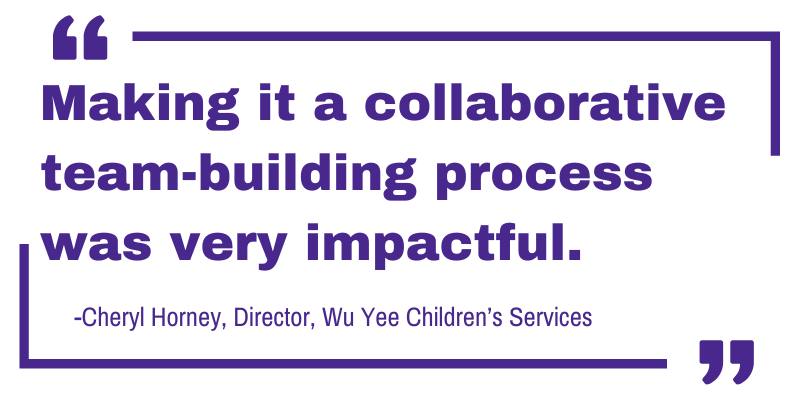Although Focus Area Two (FA2) visits only happen once during a five year grant cycle, they are a critical opportunity for Head Start programs. While the monitoring process can be stressful, it’s also an opportunity to focus your team on federal expectations, think more deeply about data, reflect on your practice, and grow together as a team. It’s also a chance for managers to articulate the patterns and stories in their data.
“When you look at how monitoring is being conducted, it’s very much through the lens of continuous improvement,” says Kristen Hayes, Management Training Lead at Early Intel, “and it’s very much through the lens of using data to understand strengths and needs.”
Here’s a look at strategies to help prepare you and your team for an FA2 visit.
Start planning early
Many programs start planning for their FA2 visit at the start of the program year when the review will take place. This prep might include mock interviews, focus groups, document reviews, observations, and mock data tours. The more time your staff has to prepare for a review, the more confident they’ll feel.
Although staff members will likely be assigned to address particular performance standards, it’s important that other team members can address those areas, too, in case someone gets sick or has a personal emergency. This came in handy for Sandra Graves, director of Champlain Valley Head Start in Vermont, when her program had their FA2 visit in April 2022. “We didn’t know with COVID who would be out or who would be present,” she says. Fortunately, they were able to cover for each other.
Also be transparent with your staff as early as possible so they know what’s coming. Once they receive their letter about an upcoming FA2 visit, some program directors send it to the Board, Policy Council, and within the agency to ensure key partners like HR and fiscal know about the upcoming review.
Review the FA2 monitoring protocol as soon as it’s released
The Office of Head Start releases the updated monitoring protocol each fall. Changes to these protocols mean that questions might be slightly different from what you or your program experienced during a previous FA2 visit. For instance, when COVID hit, there was an increased emphasis on sanitation practices. Reviewing this protocol in advance can help program leaders avoid any surprises.
Once she reviewed the new monitoring protocols, Graves and her team organized the performance standards into a note catcher format, a document that lays out each of the indicators found in the FA2 protocol, the related performance standard, and provides a space for staff to collaborate on a response to the indicators.“In that note catcher would be lists of relevant data to support the indicators,” she says, “and those were organized in the folders, and just easily accessible during the data tour.
Graves’ team revisited the note catcher every few weeks with a more in-depth review the week before their FA2 visit.
Expand your FA2 prep beyond the management team
Ideally, everyone should take ownership of the FA2 review, not just the management team. Teachers and other staff need to be comfortable answering questions, so during professional development time, you can have them practice with mock interviews. This is what Cheryl Horney, director of Wu Yee Children’s Services in San Francisco, did.
Because the protocol language is often very technical, it can be helpful to create a definition sheet for terms they might not use in their everyday conversations. This can give teachers more familiarity with terms like “curriculum implementation” and “ensuring fidelity” that could come up during your FA2 visit.
Some of the managers at Wu Yee Children’s Services gamified their FA2 prep with a Jeopardy-style game on in-service days, making the process into a fun team-building instead of a chore. This also helped to break down silos between teams. “Making it a collaborative team-building process was very impactful,” Horney says.
Policy Council members and board members also need to be kept in the loop so they can effectively answer questions around governance.
Hayes suggests enlisting other community members who aren’t normally at your sites to visit the sites and ask themselves these questions:
- What do I see?
- What do I hear?
- What do I smell?
- How do I feel?
This sensory feedback can help your staff see the site through the eyes of an outside observer like a federal reviewer and address any issues in advance of their FA2 visit.
Consider language preferences
Horney’s program held the family and Policy Council interviews at the same time. In retrospect, that’s one thing she would’ve done differently. “We have families who prefer a home language of Cantonese and Spanish, and then the reviewers preferred English, so we ended up having three-way consecutive translation,” she explains. “The interview took about two and a half hours, so we might split those two interviews up to just give people more breathing room.”
Overall, when programs embrace FA2 preparation as a learning opportunity, it sets them up for a smoother and more positive review process. By starting early and expanding preparations beyond the management team, leaders can foster a culture of continuous learning and improvement, as well as a sense of belonging and engagement for staff.


